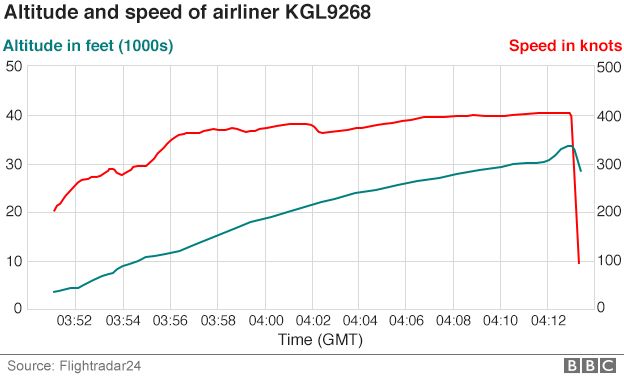Now, it has been published that the tail section landed some three miles from the bulk of the a/c debris.

The debris field is bimodal and the tail section apparently is in the debris cluster that is closest to the point of takeoff.

(The tail section is apparently in the debris cluster at lower tight.)
Initial loss of the tail or command of the aft horizontal control surfaces is consistent with the very rapid and violent vertical velocity excursions in the last 16 seconds of recorded transponder data:

It has been suggested that an altitude-triggered detonator with an onboard explosive device could have been involved. The (green) altitude plot from transponder data in the last minute is not inconsistent with that scenario:

The time that the a/c reached its maximum altitude (green plot) coincides with the instant that the groundspeed (red plot) began a precipitous 16-second deceleration from 408 knots to 62 knots. Such a rapid decelertion is typical of an air frame that has "departed flight conditions" to become a flopping, tumbling disintegrating mass of falling debris...
~~~~~~~~~
There is still a possibility that residual damage from an earlier tailstrike may have been the initiating factor. But the evidence that is in the public domain is not inconstent with a bomb in the aft john...
~~~~~~~~~
Others are on their own in assigning blame; I don't play that game...